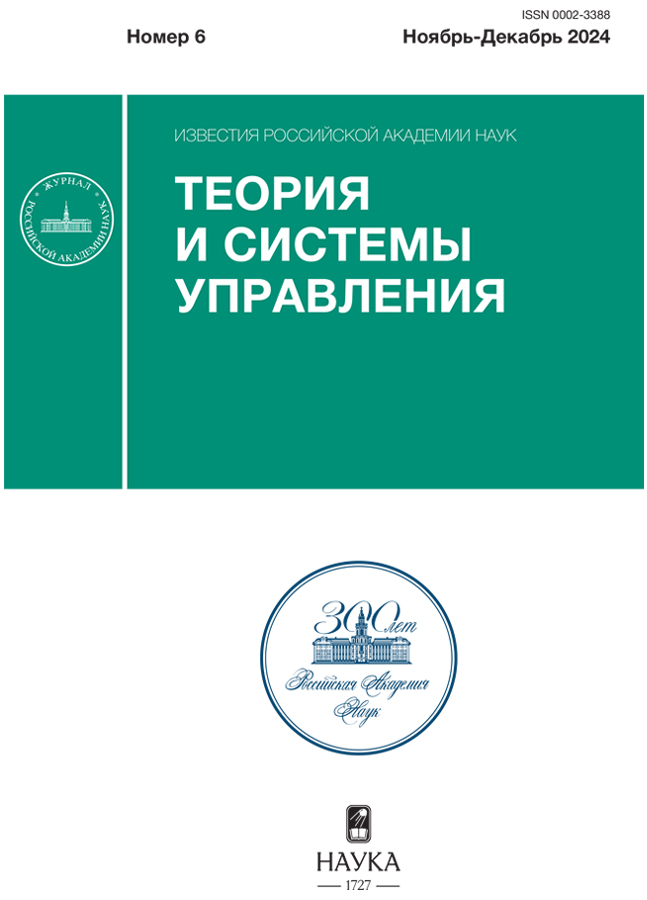Machine learning models to automatically discover novel functional patterns in multivariate time series
- Authors: Maysuradze A.I.1, Sidorov L.S.1
-
Affiliations:
- Lomonosov Moscow State University
- Issue: No 6 (2024)
- Pages: 135-143
- Section: ARTIFICIAL INTELLIGENCE
- URL: https://ruspoj.com/0002-3388/article/view/683142
- DOI: https://doi.org/10.31857/S0002338824060106
- EDN: https://elibrary.ru/subtil
- ID: 683142
Cite item
Abstract
In this paper, we propose a method and a specific architecture for a machine learning model that assists researchers across various fields in automatically identifying functional patterns in multivariate time series from a series of experiments. The initial problem was formalized in terms of machine learning, eliminating the need for researchers to be experts in the specific subject matter under examination. The effectiveness of the method has been demonstrated in the field of neurophysiology with data where the existence of the P300 pattern is already known. For further research, it would be beneficial to generalize the proposed method to other areas, such as sensor data from production lines or banking transactions.
About the authors
A. I. Maysuradze
Lomonosov Moscow State University
Author for correspondence.
Email: maysuradze@cs.msu.ru
Russian Federation, Moscow
L. S. Sidorov
Lomonosov Moscow State University
Email: leon.sidorov@gmail.com
Russian Federation, Moscow
References
- Blankertz B., Muller K.R., Krusienski D.J., Schalk G., Wolpaw J.R., Schlogl A., et al. The BCI Competition iii: Validating Alternative Approaches to Actual BCI Problems // IEEE Transactions on Neural Systems and Rehabilitation Engineering. 2006. V. 14 (2). P. 153–159.
- Oktay O., Schlemper J., Folgoc L.L., Lee M., Heinrich M., Misawa K. et. al. Attention U-Net: Learning Where to Look for the Pancreas // arXiv preprint arXiv:1804.03999, 2018.
- Lee H., Yune S., Mansouri M., Kim M., Tajmir S.H., Guerrier C.E. et. al. An Explainable Deep-learning Algorithm for the Detection of Acute Intracranial Haemorrhage from Small Datasets // Nature Biomedical Engineering. 2019. V. 3 (3). P. 173–182.
- Ardila D., Kiraly A.P., Bharadwaj S., Choi B., Reicher J.J., Peng L. et. al. End-to-end Lung Cancer Screening with Three-dimensional Deep Learning on Low-dose Chest Computed Tomography // Nature Medicine. 2019. V. 25 (6). P. 954–961.
- Sundararajan M., Taly A., Yan Q. Axiomatic Attribution for Deep Networks // Intern. Conf. on Machine Learning. PMLR. Sydney, Australia, 2017. P. 3319–3328.
- Caicedo-Torres W., Gutierrez J. ISeeU: Visually Interpretable Deep Learning for Mortality Prediction Inside the ICU // J. Biomedical Informatics. 2019. V. 98. P. 103269.
- Guo H., Kruger U., Wang G., Kalra M.K., Yan P. Knowledge-based Analysis for Mortality Prediction from CT Images // IEEE Biomedical and Health Informatics. 2019. V. 24 (2). P. 457–464.
- Van der Maaten L., Hinton G. Visualizing Data Using t-SNE // J. Machine Learning Research. 2008. V. 9(11).
- Cecotti H., Graser A. Convolutional Neural Networks for P300 Detection with Application to Brain-computer Interfaces // IEEE Transactions on Pattern Analysis and Machine Intelligence. 2010. V. 33 (3). P. 433–445.
- Vaswani A., Shazeer N., Parmar N., Uszkoreit J., Jones L. et al. Attention is All you Need // Advances in Neural Information Processing Systems. 2017. V. 30.
- Krizhevsky A., Sutskever I., Hinton G. E. Imagenet Classification with Deep Convolutional Neural Networks // Advances in Neural Information Processing Systems. 2012. V. 25.
- Squires N.K., Squires K.C., Hillyard S.A. Two Varieties of Long-latency Positive Waves Evoked by Unpredictable Auditory Stimuli in Man // Electroencephalography and Clinical Neurophysiology. 1975. V. 38 (4). P. 387–401.
- Schalk G., McFarland D.J., Hinterberger T., Birbaumer N., Wolpaw J.R. BCI2000: A General-purpose Brain-computer Interface (BCI) System // IEEE Transactions on Biomedical Engineering. 2004. V. 51 (6). P. 1034–1043.
Supplementary files










